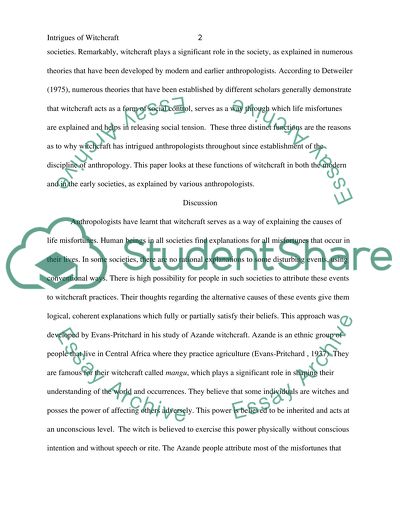Cite this document
(“Why does witchcraft continue to intrigue successive generations of Essay”, n.d.)
Why does witchcraft continue to intrigue successive generations of Essay. Retrieved from https://studentshare.org/anthropology/1473427-why-does-witchcraft-continue-to-intrigue
Why does witchcraft continue to intrigue successive generations of Essay. Retrieved from https://studentshare.org/anthropology/1473427-why-does-witchcraft-continue-to-intrigue
(Why Does Witchcraft Continue to Intrigue Successive Generations of Essay)
Why Does Witchcraft Continue to Intrigue Successive Generations of Essay. https://studentshare.org/anthropology/1473427-why-does-witchcraft-continue-to-intrigue.
Why Does Witchcraft Continue to Intrigue Successive Generations of Essay. https://studentshare.org/anthropology/1473427-why-does-witchcraft-continue-to-intrigue.
“Why Does Witchcraft Continue to Intrigue Successive Generations of Essay”, n.d. https://studentshare.org/anthropology/1473427-why-does-witchcraft-continue-to-intrigue.


